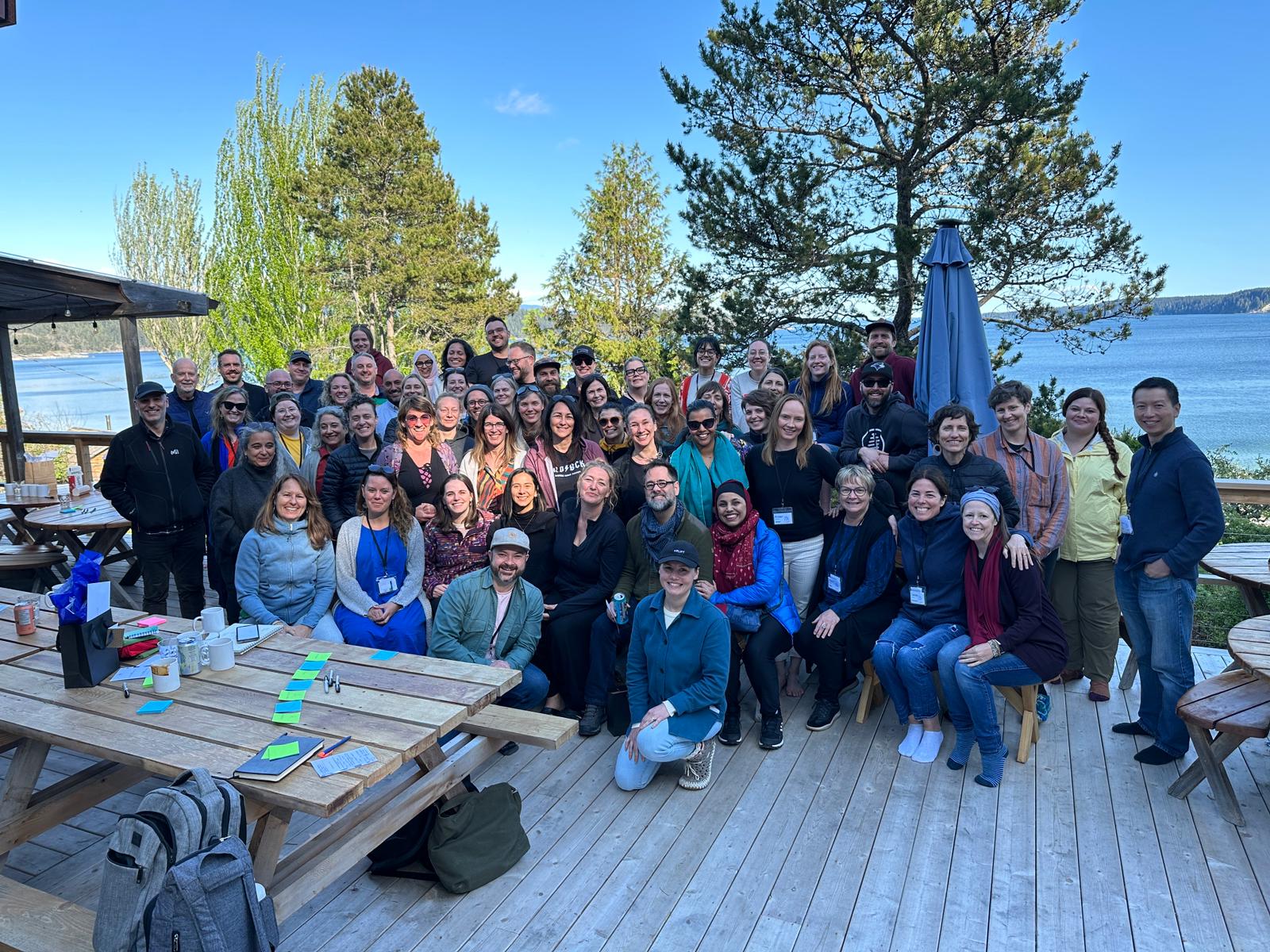
26 June 2024
The Future of Labs and the Power of Co-Learning and Visioning with Fellow Practitioners
By Brent Wellsh, Community Innovation Lead at Urban Matters
In early May, I had the privilege of attending the Future of Labs gathering. This event was convened by the Skills Society Action Lab and Social Innovation Canada at the Hollyhock Retreat Center on Cortes Island, British Columbia, traditional territory of the Klahoose, Tla’amin, and Homalco Nations. This event brought together some of the most experienced practitioners and conveners of social innovation labs from Canada and beyond.
For context, ‘social innovation labs’ were popularized by Zaid Hassan in his book The Social Labs Revolution. Borrowing from the scientific research tradition of ‘labs’, this approach emphasizes convening a collaborative space where diverse stakeholders co-create and test innovative solutions to complex social issues. As the field has evolved, ‘labs’ have been set up in communities, public sector organizations, and third-party environments to boldly pursue systemic change in various contexts.
What drew me to this gathering was the humble admission that we, as systems change practitioners and as a collective field, need to reflect soberly on our journey—the challenges and persistent hurdles we face—to evolve our practices and better respond to the needs of our time. I was part of a high-performing, high-value public service innovation lab team that eventually saw its funding cut. Now, as a Community Innovation Lead for Urban Matters, I continue to advocate for the immense value of the lab approach despite the considerations which surface around cost, time commitment, and uncertainty of results.
Given this, I was eager to attend the Future of Labs and explore how we might collectively navigate these realities and tensions.
As I left the gathering, I was struck by three provocations as I reflected on the experience and what I learned over these three immersive days. These provocations not only challenged my perspective but also reinvigorated my approach to my work, emphasizing the urgency and possibility for transformative change.
1. Envisioning a Better World: What Do We Want to See?
This gathering emphasized the importance of envisioning transformational endeavors or missions that can profoundly impact society for the better. This element resonated deeply with me. Consequently, my most fundamental takeaway has been contemplating the need to intentionally articulate our desired future, or range of futures, within a given context to create a clear direction to build towards. How might a social innovation lab serve as a platform to drive activity in this direction?
We are living in a tumultuous era marked by widespread polarization, whether real or perceived. However, I believe this polarization will have a half-life. In the face of a polycrisis, our collective societies will need to rally around a unifying vision of what we want and need. For the field of social labs to have merit, it must be equipped to support this vital work and effort.
“My most fundamental takeaway has been contemplating the need to intentionally articulate our desired future, or range of futures, within a given context to create a clear direction to build towards.“
2. The Power of Collaboration: A Portfolio of Labs
The second takeaway, closely related to the first, revolves around how we might sequence or unite parallel social innovation lab projects working across different geographies but addressing similar problems. How can we aggregate learning and insights to support deeper effort and impact?
These labs can serve as innovation hubs where ideas are tested, refined, and scaled. By pooling resources, knowledge, and expertise, a network of labs can drive scaled change more effectively than isolated efforts where the expectations may not only be too high, but also unfair as a single lab may not have the resources, mandate, nor time to address a given issue at the scale required.
Imagine a network of labs dedicated to solving Canada’s housing crisis, each focusing on different aspects such as the financial equation, housing supply, unlocking new housing models, and more. By working together, these labs could potentially achieve a deeper of transformation than could be effected by a single lab. In many ways I was thinking of the mission-oriented innovation movement that I have alluded to around/social and physical infrastructure needed to drive this change. In many ways, a portfolio of labs is akin to this.
3. Enabling Conditions: Levers for Success
Finally, my last take-away is a chicken or the egg dynamic: for labs to realize this potential, the ecosystem of support needs to be present to create these conditions or success. We explored this idea of the required supportive eco-system on the final day of the gathering. Some essential elements likely needed are:
- Funding and Resources: Adequate funding and resources are essential for labs to carry out their research and innovation activities. Governments, private sector partners, and philanthropic organizations need to play a crucial role in providing the necessary financial support.
- Collaboration and Knowledge Sharing: A culture of collaboration and knowledge sharing can amplify the impact of individual labs. Platforms for sharing research findings, best practices, and lessons learned can help labs avoid duplication of efforts and build on each other’s successes.
- Public Endorsement and Ownership: Engaging the public in the work of labs (and even making them more public-facing) can build support for their initiatives and ensure that the solutions developed are aligned with societal needs and values. Public engagement can also foster a sense of ownership and commitment to the transformations being pursued.
Why I think this is a chicken-or-egg situation, however, is due to the need for proof of concept to garner support for innovation labs, yet the need for upfront support to initiate said concept. This is a significant concern, but I believe the answer lies largely with us as conveners and lab practitioners. It’s on us to demonstrate the potential of this value, giving us a chance to catalyze the support environment needed.
Conclusion
The Future of Labs gathering underscored the critical window of opportunity we have in the next 10 years to initiate and drive transformational initiatives that are embedded with an ambition to create.
I have no doubt this gathering will be a catalyst for shaping the next decade of effective lab approaches, connecting experienced lab leaders, and creating more impactful practices to tackle the most pressing challenges of our time. I am thankful to have been a part of this gathering and look forward to the work we, as a collective, have ahead of us.




